Olá da Madeira! The island – a green paradise in the middle of the Atlantic Ocean – has been home to us for almost three months already. How the time flies!
We are Lara and Karo, one of 8 teams that currently conduct experiments all over the world as part of this year’s GAME project. Lara is a Marine Biology student currently enrolled at the University of Rostock and she is collecting data for her master thesis within the project. When she heard about GAME from her professor, she knew she had to be part of it! Karo is studying Biological Oceanography in Kiel. She found her passion for marine sciences quite recently and has never lived close to the ocean on beforehand. It was a dream of them both to join this project!
This year’s aim is – like in the previous years since 2021 – to investigate the effects of artificial light at night (or ALAN for short). We want to see how this phenomenon affects macroalgae in their ability to photosynthesize, grow and defend themselves against grazers. After an intense planning phase in March, during which we decided on the design of our experiments, we were more than glad to leave cold and grey northern Germany behind and escape into the sunny, subtropical climate of Madeira.

Finding accommodation was not easy, but in the end, we found a nice flat in the capital city Funchal with (almost) an ocean view! More than this, we have a balcony where we’ve enjoyed many lengthy weekend breakfasts.
We had an enjoyable first week when we settled into our flat, scouted the city and tried to figure out the bus system, which proved to be kind of complicated, since there are so many different bus companies here. One thing we learned very quickly, though: walking on this island requires strong calves. Madeira is hills…hills…and more hills. This is why you hardly ever see local people walking here – sometimes you get funny looks when you are doing a typical German “Spaziergang” (which is more like a hike over here), and you really have to watch out not to get run over by a bus or a car.
Then, we finally met the team of the Marine and Environmental Science Centre “MARE”. In our first meeting, we sat together with our supervisors (who are all former GAME participants!) and discussed how we could make our experiments here successful. Everyone was excited and motivated to get our project started!
Not long after, we made our first trip to the laboratory where we are conducting our experiments together. It is located in Quinta do Lorde, a place on the easternmost part of the island. It is close to the peninsula “Ponta de São Lourenço” which offers stunning views over the rugged coastline of the volcanic island. This part of the island is very dry and it almost feels like you have stepped into a desert – quite the contrast to the rest of Madeira, which is a lush, green paradise.



It is also the perfect spot for investigating ALAN, since it is very isolated and therefore mostly uninfluenced by nighttime illumination. Hence, the marine life here is not already adapted to light at night. The only downgrade is: the lab is located quite far away from Funchal, where we live. Most days, we have to take a bus that takes the scenic route and drives 1.5 hours along the coast, up and down the hills. At least we are rewarded with pretty ocean views during the drive – or we go for a little nap, especially after a long day in the lab. Thankfully, we can sometimes catch a ride in the car with our supervisors.
In the first weeks, we worked hard to build up our experimental set-up. Thanks to the great work of former GAME students, our lab is already equipped with most of the materials that we need, so we could quickly set up a flow-through system to supply running water to our algae. But we celebrated too soon: The complete water system of the lab had to be cleaned with bleach due to some pesky epiphytic growth and that meant that we had to re-do the flow through system again from scratch. We patiently cut tubes, and more tubes and connected them with little plastic suppliers, which let out filtered seawater to each of our 72 experimental tanks.

To give our algae as much light as possible, so that they are able to happily photosynthesize, we decided to order more LED lamps. One thing we did not anticipate: Madeira is located in the middle of the Atlantic Ocean, around 1000 km from the European coastline (the African coast is actually closer!), so equipment can take a loooong time to arrive. We were lucky that our lamps arrived “only” 3 weeks later, but already we faced the next challenge: connecting our lights to the control unit, with which we want to regulate the light intensity that our algae will be exposed to, proved to be more difficult than we had previously thought. However, with the help of the lab technician Patrício we quickly found a solution!
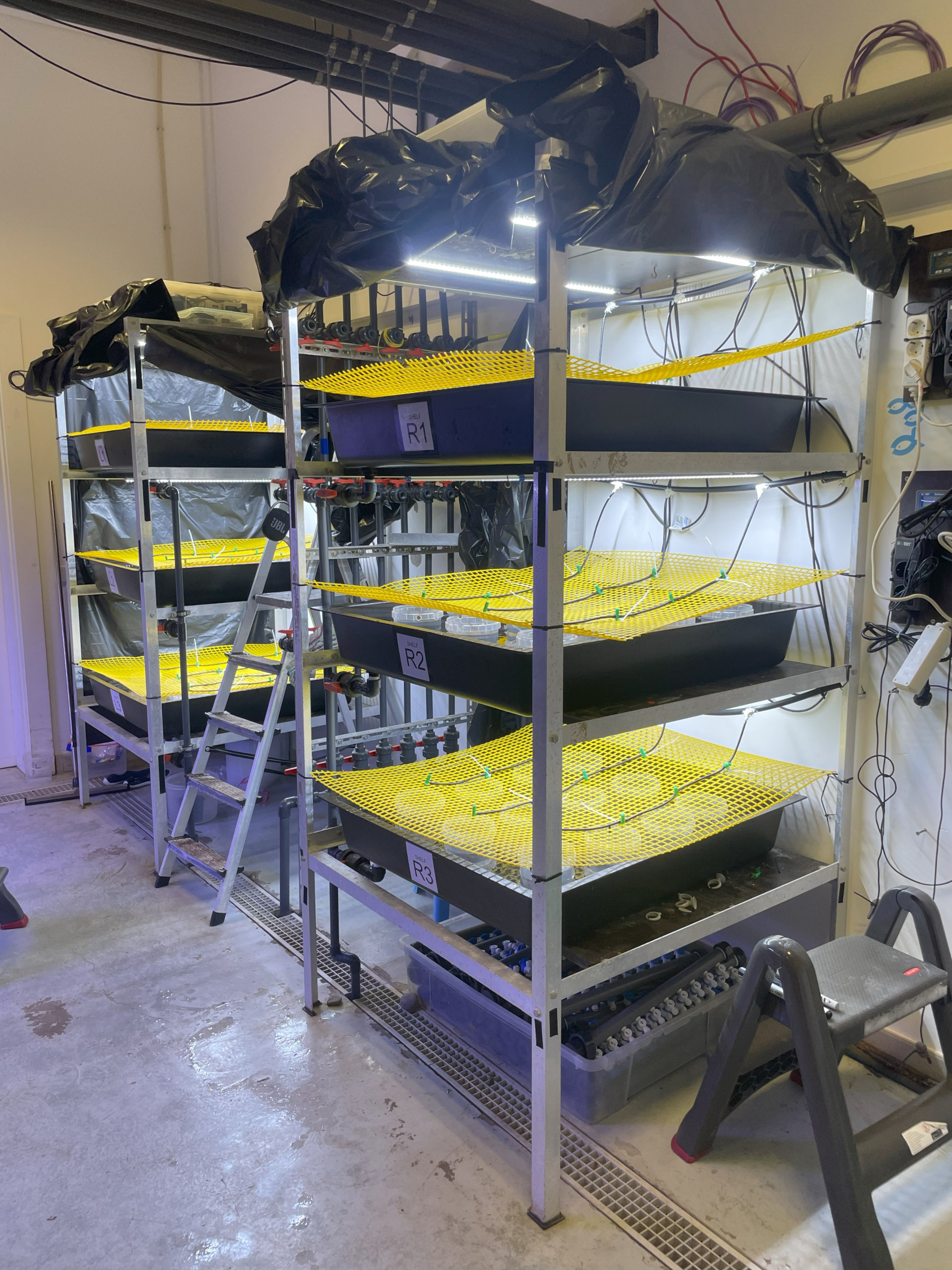
When we weren’t diligently building our set-up, we spent our days snorkelling in different places on the south coast of the island, looking for algae “candidates” that we could use in our experiments. Easier said than done, because the waters around Madeira are depleted in nutrients and large macroalgae are rare to find. We quickly decided on using Halopteris scoparia, a brown macroalgae that is quite abundant in the upper subtidal and therefore possible for us to collect while snorkelling. Another (particularly interesting) candidate is Rugulopteryx okamurae, an invasive brown alga, that has first been introduced on the north coast of Madeira in 2021 and since then spread rapidly – it is even growing on the pontoons in the marina outside our lab. It could be especially interesting to investigate how this species reacts to ALAN in comparison to native algae.

Since we want to investigate how ALAN affects the defence capacity of our algae, we also had to find suitable grazers (=algae eaters). Our options were less than ideal: Should we use sea urchins (even though they are very hungry and consume our algae in too large amounts) or intertidal snails (even though this makes less sense ecologically, because our algae come from the subtidal). In the end, we decided on the sea urchin Paracentrotus lividus, which we can easily collect in the tide pools next to our lab. Did we say easy? – To get the hang of how to sample these little algae eaters took some blood, sweat and tears. Equipped with forks and buckets; after waiting for low tide to arrive, we wade into the tide pools and try to gently (or not so gently) persuade our sea urchins to come out of the holes in the rock that they like to sit in. We always take good care not to injure or stress them too much, but some unfortunately have already met their fate.


Before we could start with the main experiments, we had to test a few things. For instance, how much and when the sea urchins eat and how much the algae photosynthesize. To find this out, we carried out some pilot studies – more or less successfully. During one of our pilot studies all our sea urchins mysteriously died, probably after some contamination[LM1] [LH2] of the water. In addition to this, our method for measuring the oxygen production initially did not work, because the oxygen values we measured did not stabilize and photosynthesized waaaay too slowly despite looking perfectly healthy. After many hours of trial and error, we fortunately found a way that should allow us to accurately assess the oxygen evolution. For this[LM3] , we increased the light intensity to help the algae photosynthesize more quickly and also got a multi-position magnetic stirrer where we can put multiple of our containers with algae on simultaneously. A little magnetic bar keeps the water in the containers in constant motion, resulting in more stable oxygen measurements.

Furthermore, we have another nice tool available here. It is a PAM, which is short for Pulse Amplitude Modulation. Behind this rather complicated name lies a technology with which we can assess how well our algae are absorbing sunlight for photosynthesis and ultimately determine their health status. Because no one in the institute had used the device before, we had to do a lot of headache-inducing reading (the 200-page manual is not easy to understand) and carry out some test runs to get prepared for the measurements. Our weekly meetings with the other GAME participants became crucial for discussing challenges and brainstorming solutions together – so far this project has been a huge learning curve for the both of us.

Our lunch breaks we share with the lizards. Fun fact: there are more lizards than mice on Madeira! They are called Madeira lizards (Teira dugesii) and they are endemic to some of the Macaronesian islands. They are very curious creatures – especially when we unpack our food. They sometimes even like to jump on our feet, but you have to watch out that they don’t crawl inside your backpack, and you accidentally take home a new pet.

When we are not in the lab, we also know how to have fun (not that being in the lab is not fun). Madeira is an island full of amazing places and activities, and it’s a hiker’s paradise! There are a lot of different routes to explore, very famous are “levada” walks here. Levadas are old, narrow water channels that wind through the mountains. They were constructed to carry water from the misty mountains down to the drier parts of the island to water the crops of the farmers. You can walk along these levadas and enjoy the views over the island!
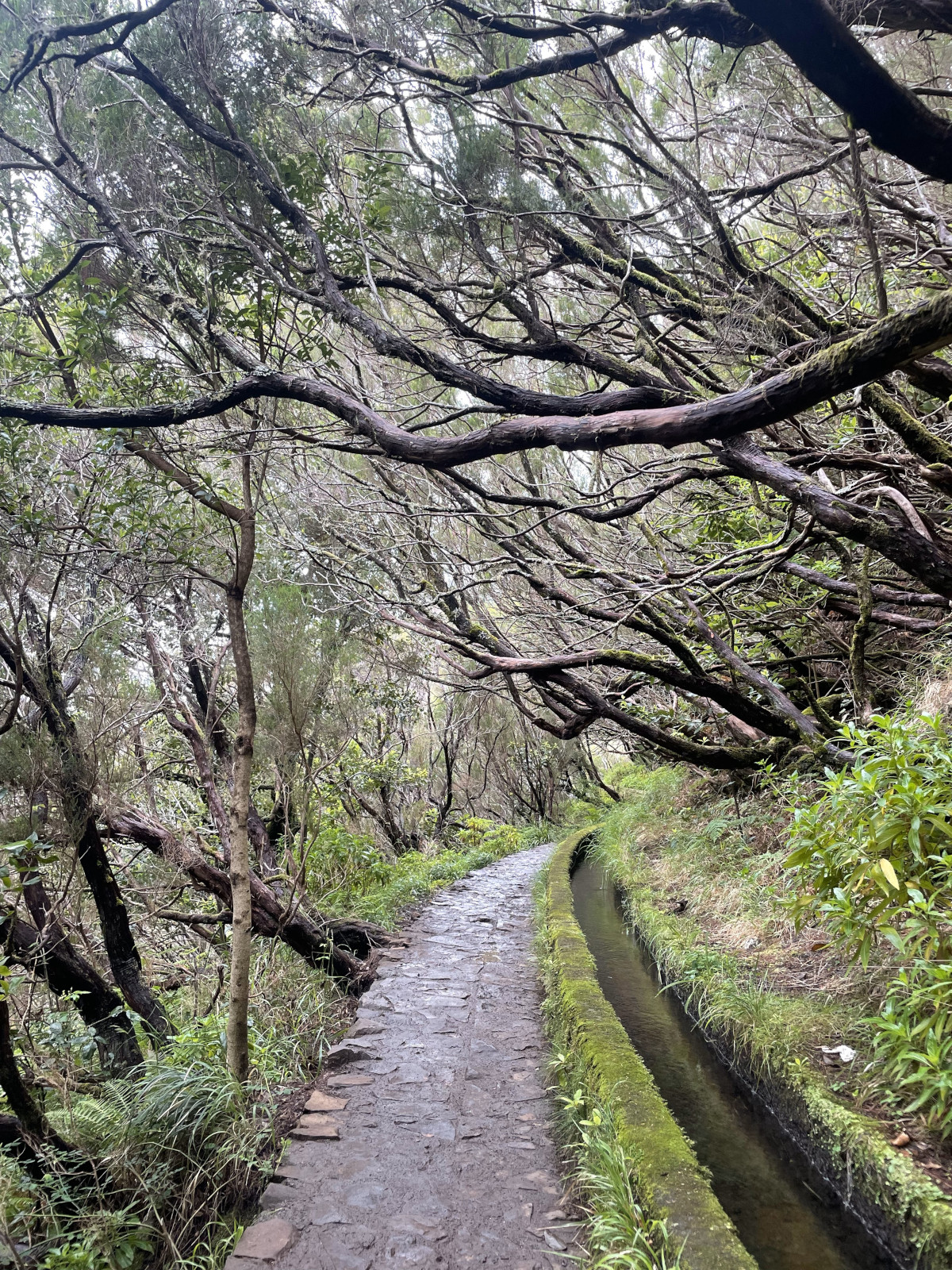
Besides doing a lot of hiking and training our calves, we have spotted some dolphins, explored different beaches, and even got swept up in the European Championships fever. Since Madeira is Cristiano Ronaldo’s birthplace, people here (young and old) are fans, and we joined the locals cheering for the Portuguese soccer team. Of course, we also had to try Madeira’s famous “poncha”, a traditional drink with rum and fresh fruit juice – typically lemon, orange, or – our favourite – maracuja. Another drink is Nikita, which is a mixture of pineapple juice, ice cream and beer. It tastes… well… interesting, as Karo’s face in the picture shows.
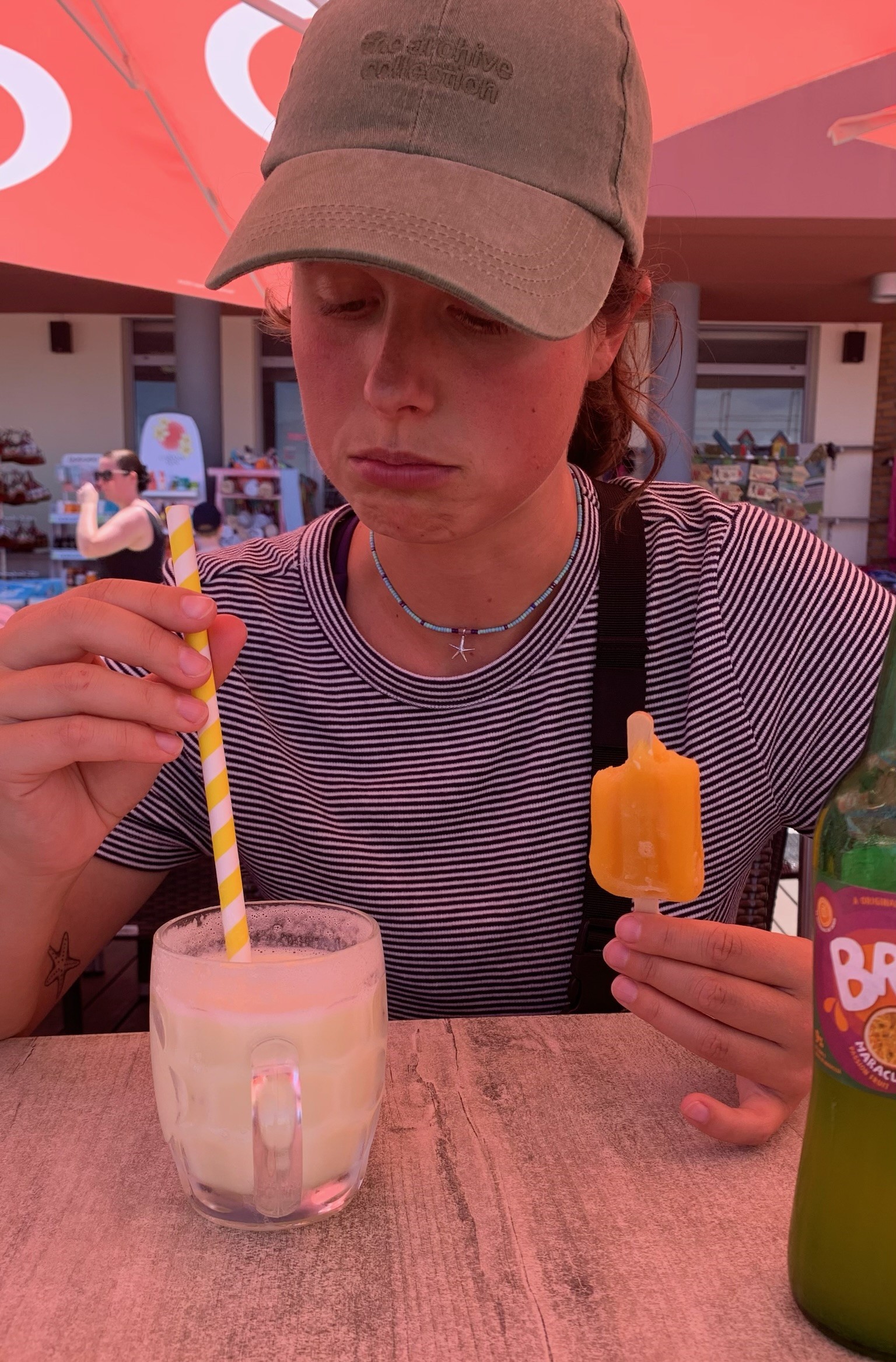
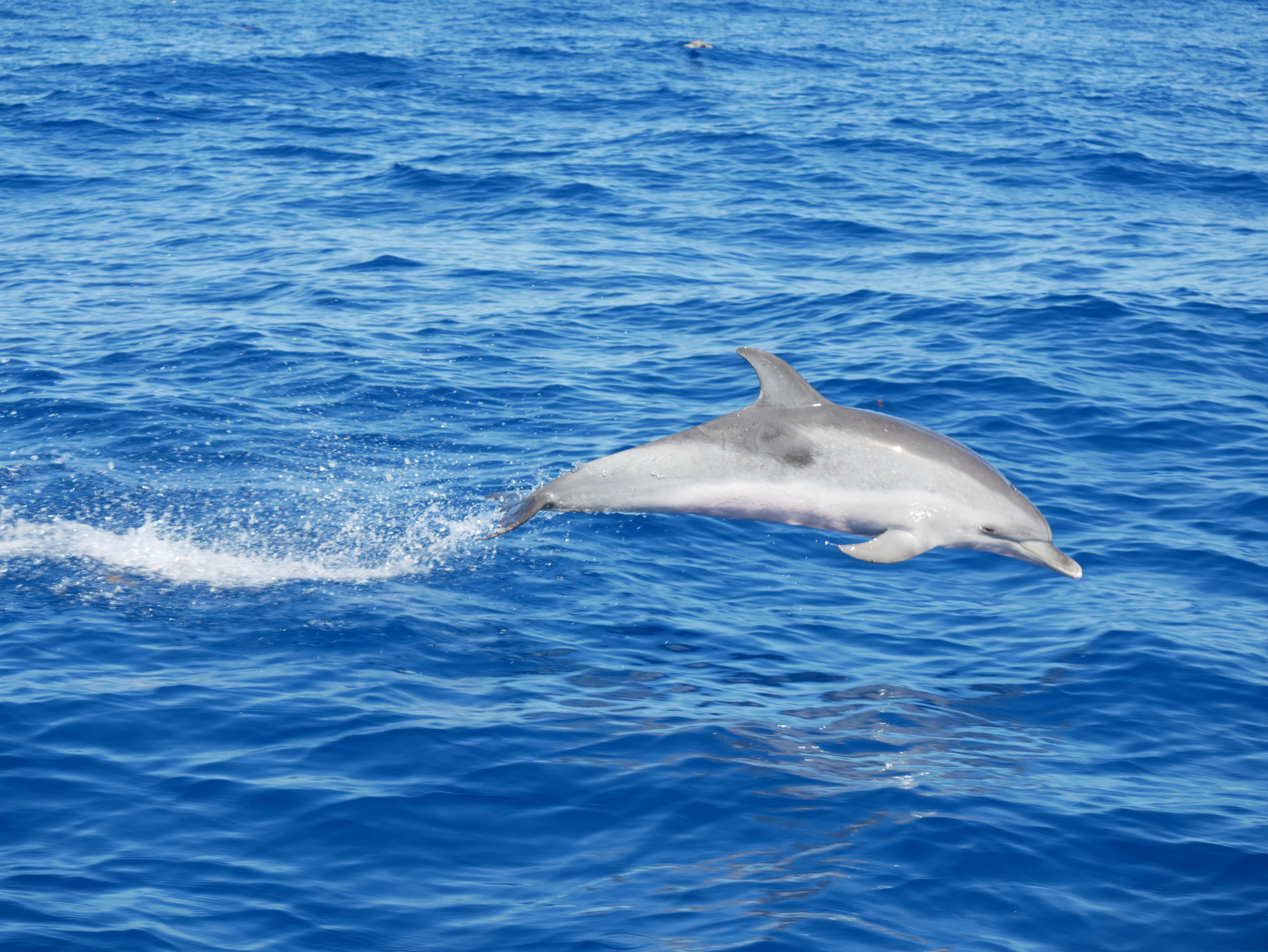
Madeira’s climate is perfect for growing all kinds of tropical fruits and other plants. What people keep as house plants in Germany, grows here in ditches next to the road, or in the size of trees – Monstera leaves get almost bigger than oneself! We also tried some fruits here that we have never seen before in our life. Our flatmate’s supervisor even has avocado trees in his backyard, which we sometimes get a share of – a luxury we will sorely miss back in Germany.
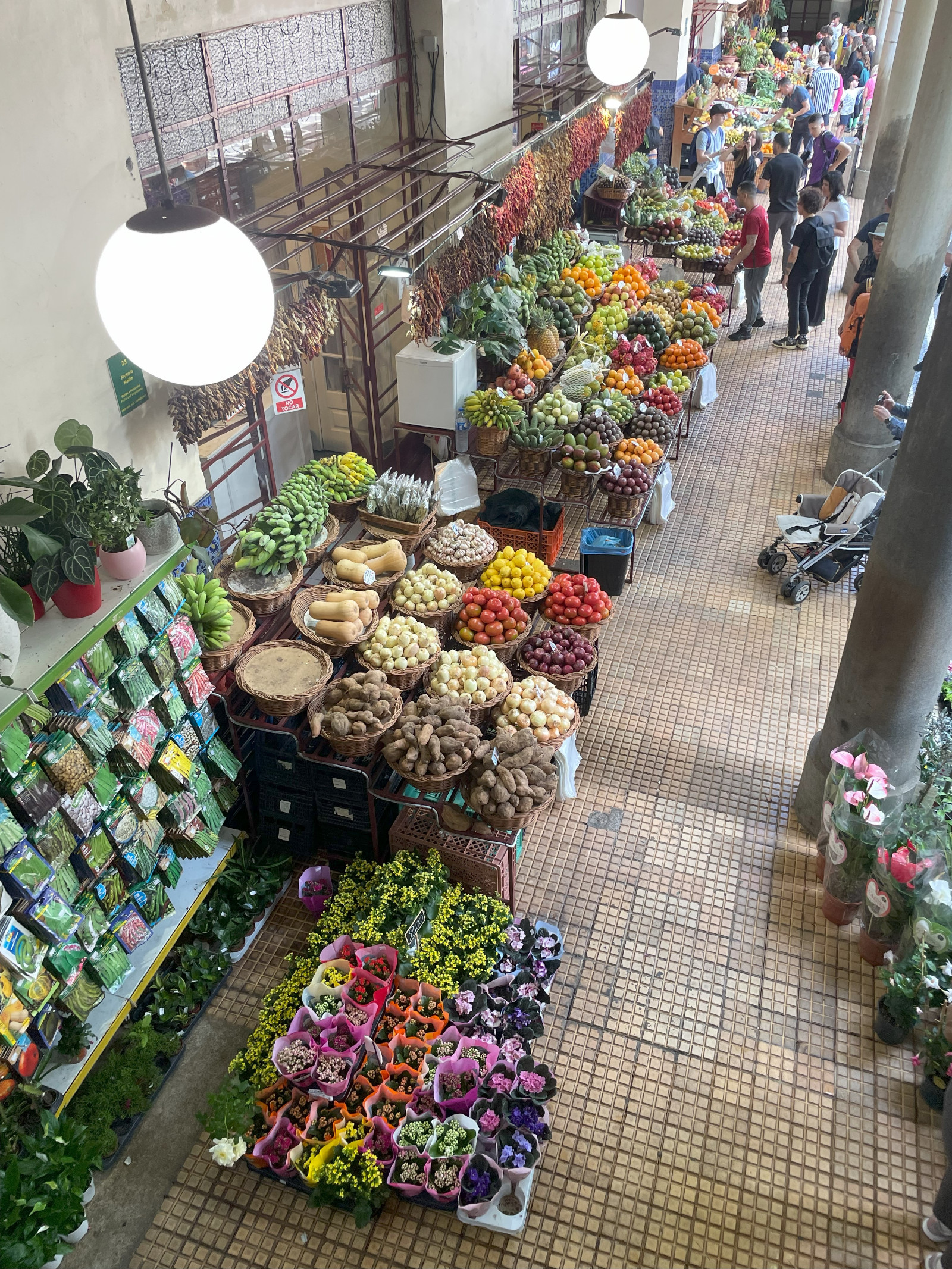


Another thing we learned here: you can never trust the weather forecast. In Funchal, situated on the south coast, the weather is usually pretty dry and sunny. However, it’s a different story for the North coast, where it rains more frequently, and temperatures are cooler. But even here on the sunny south coast, you never know what to wear. You could burn under the African sun or in the next second freeze from the wind, especially in the evenings, when the sun is already down. The onion-principle (a German favourite) really proves best.
We have been really enjoying our time here so far and we are sure by the end of September we will not want to go back to Germany. We have finished the first experiment and are soon starting the second one, we are excited to see what happens!
Lights, Algae, Action! Researching light pollution in the middle of the Atlantic
Ocean Acidification
FYORD Travel Grant Reports: November 2025
From DAAD Summer School to Doctorate: Reflections at ICON 9
Hi! I am Riel Carlo O. Ingeniero from the Chemical Oceanography Department at GEOMAR. I recently had the opportunity to attend ICON 9 (International Conference on Nitrification and Related Processes) last July 2025, one of the leading conferences focused on advances in the nitrogen cycle. It was an honour to be selected to present my research twice – first during the Early Career Workshop on the opening day, and then through a poster presentation on the second day of the main conference.
ICON 9 brought together many of the most prominent names in marine nitrogen cycle research. I was fortunate to meet and engage with inspiring scientists, including Dr. Boran Kartal, Dr. Hanna Marchant from the Max Planck Institute in Bremen, Dr. Claudia Frey from the University of Vienna, Dr. Scott Wankel from Woods Hole Oceanographic Institution, Dr. Bo Thamdrup from the University of Southern Denmark, and Dr. Qixing Ji from HKUST. I also had the chance to see Dr. Bess Ward in person, someone whose work I’ve long admired.

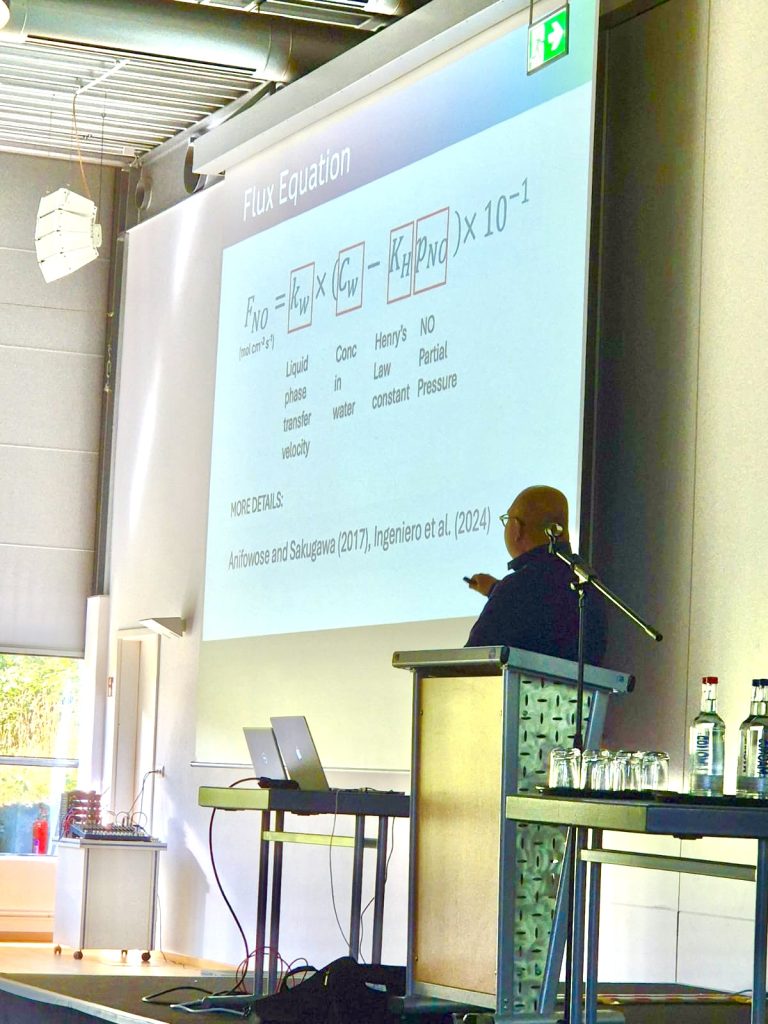
The conference was hosted by the Max Planck Institute for Marine Microbiology in Bremen, a place that holds deep personal significance. I first visited it 13 years ago during a DAAD International Summer School Biodiversity: Diversity of Ecosystems, Genes, and Species at the University of Osnabrück. That visit, including a tour of the Max Planck Institute and MARUM led by Prof. Dr. Rudolf Amann, played a pivotal role in my decision to pursue a career in marine science.
I recently completed my doctorate at Kiel University in June this year, and I am incredibly grateful for the excellent education and world-class research environment that Germany offers. Under the supervision of Prof. Dr. Hermann W. Bange and funded by the DAAD Research Grants – Doctoral Programmes in Germany and the SO305-BIOCAT-IIOE2 project, I have had the opportunity to work on cutting-edge research in marine biogeochemistry, with a particular focus on nitric oxide (NO) dynamics in the ocean.

Presenting in front of over 100 participants during the ICON 9 was not only a rewarding experience but also excellent preparation just days before my doctoral defense and oral examination. Overall, ICON 9 was a meaningful and inspiring milestone, a full-circle moment in my scientific career.
Special thanks to FYORD and Kiel Marine Science for supporting my growth as an early-career marine scientist.
Riel Carlo
15th International Conference on Palaeoceanography, India
When my Uber wound through the chaotic traffic of Bengaluru at 2 am, I knew this conference would be different from the ones I was used to in Germany. I had just arrived in India for the 15th International Conference on Palaeoceanography (ICP15), supported by the FYORD Travel Grant, and was about to spend a week combining science with new cultural impressions.
ICP is a conference with a unique size and structure. It takes place only every three years, and everyone in the field is looking forward to the meeting – indeed, it rather feels more like a “big get-together” than a conference. The program is linear, with one topic per day and no parallel sessions. This allows for focus and provides more room for discussions. I also had the feeling that this format is more comfortable for Early Career Scientists. You don´t have to plan a lot in advance, and you never feel like you´re missing out on anything. But perhaps the best way to capture the spirit of ICP is to take you on a walk through a typical day:
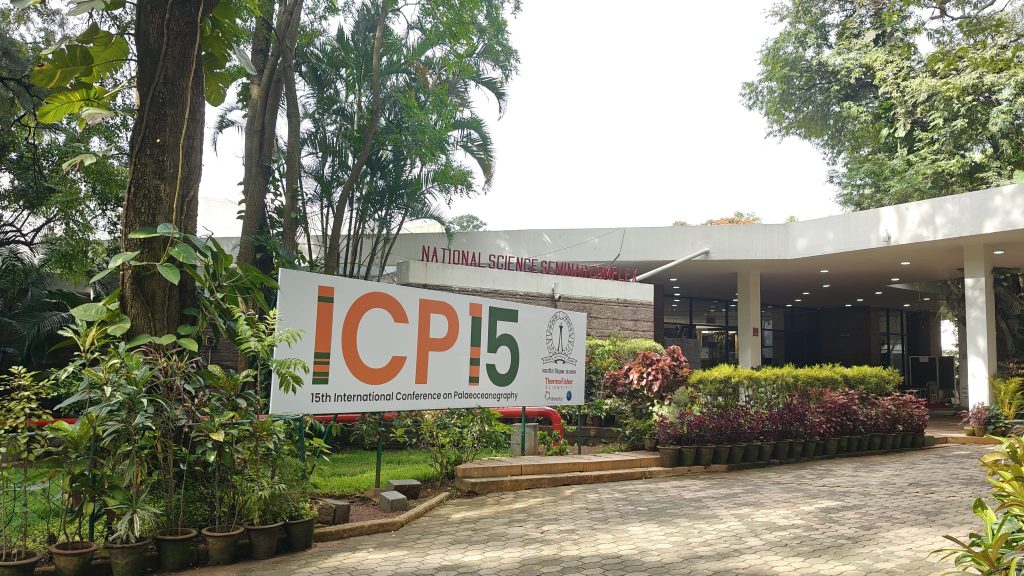
The days started with a short ride in one of the green-yellow tuk-tuks to the conference venue, which was located in one of the few green spots of the city on the campus of the Indian Institute of Science. The mornings were covered by talks by invited speakers. Actually all talks at ICP are only given by invited speakers, and you can only be selected for a talk once in a lifetime! Accordingly, we were able to enjoy some excellent presentations. Before lunch, there was a long plenum discussion with the five speakers from the morning. It was not only a great opportunity to hear different opinions on specific sub-topics, but also to show the connections between different talks, highlighting the most urgent research topics and gaps different groups are currently working on.
During lunch break, we could choose between a variety of typical Indian foods. Even though the chefs took care that the food was not too spicy for the foreign wimps, you never knew if you would sweat after the next bite. The highlight was definitely the daily Dosa, a South Indian speciality: It´s a thin, savory and crispy fried pancake made from fermented dough served with chutneys and sambars.
Long poster-sessions took place in the afternoons. All posters were put up during the whole week, which is also a big difference from huge conferences, where you usually just have a slot of one day or a few hours. It was enough time to look at the other posters, get inspired and exchange ideas. I also presented a poster with the results of the first two years of my PhD, in which I investigate climatically controlled changes in sedimentation at a site in the Southern Ocean close to Antarctica. We were able to link these changes on glacial-interglacial time scales with the ocean circulation and gain insights into the evolution of deep-water formation during times of rapid warming. Onall days, I had fruitful discussions about my work with experts in the field.

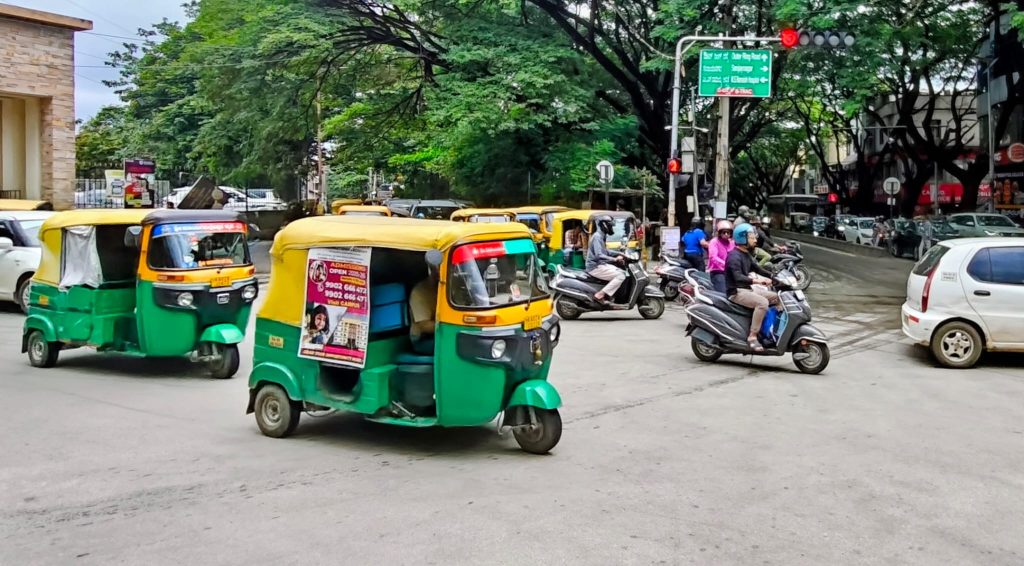
Each day was concluded with a perspective lecture by leading scientists fromthe different fields. These lectures were inspiring and an amazing summary, as they provided a broader context and deep insights into challenges and directions of palaeoceanographic research.
With the end of the scientific program, networking was not over yet, but had just started. The evenings offered a great opportunity to approach people and get into contact in a casual atmosphere. Whether at the icebreaker, conference banquet or at the Palaeomusicology Concert – another ICP tradition, which goes back to Nicholas Shackleton, paleoceanographer and skilled clarinet player. It´s an evening where the musical ones among the scientists show their skills. Singing, bagpipes, and even a small spontaneously formed band made the evening unforgettable!
Looking back, I am grateful for the opportunity to attend ICP15 with the support of the FYORD Travel Grant. It was both a scientific and cultural experience, and a great chance to meet old and new friends and colleagues. I can highly recommend ICP to other early career researchers in the field due to its unique format and special atmosphere!
Moritz
Gordon Research Conference in Animal-Microbe Interactions
My name is Igor Duarte, and I am a third-year PhD student at the Marine Symbiosis Lab, where we explore the origins and molecular novelties of close associations between bacteria and marine animals. The partnership I am mostly focused on in my PhD is between a free-living, mouthless flatworm from the genus Paracatenula, and the chemosynthetic bacteria from the genus Candidatus Riegeria that live inside its cells. In this system where no mouth is present to let nutrients in, the bacteria and are chemosynthetic, which means. After hundreds of millions of years of coevolution, this highly specialised symbiosis is now the only way by which each of these organisms can survive, and a topic of high interest to understand the evolution of such longstanding partnerships.

The FYORD Travel Grant programme supported my participation in the Gordon Research Conference (GRC) in Animal-Microbe Interactions, which this year took place in Portland, Maine, USA. Throughout the five days of the Conference, about 180 attendees from all over the world shared their main findings from the field of symbiosis, including the topics microbiome, intracellular microorganisms, parasitism, and evolution and molecular novelties of symbiotic associations. Additionally, the event was combined with a Gordon Research Seminar, which allowed early-career researchers to network more freely and exchange experiences from each one’s PhD and postdoctoral trajectories. I had the opportunity to present a poster entitled “Clade-specific genome evolution of Ca. Riegeria, the obligatory endosymbiont of a mouthless flatworm”, where I summarised the latest results from my PhD project.
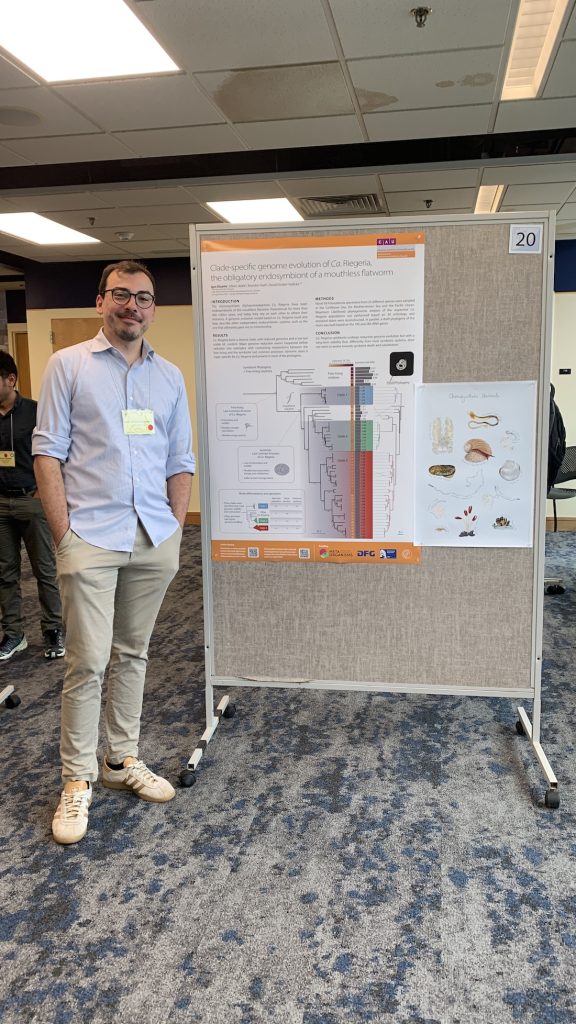
What I liked most about participating in this conference was how nicely it was conceptualised, with the goal of creating a relaxed environment to foster relevant connections between new and veteran attendees. In such a set-up, not only was I introduced to cutting-edge methods which are being used to answer relevant questions from the field, but I also had the opportunity to discuss them directly with the authors. Another positive aspect was that the speakers were encouraged to share problems that they faced during their experiments to show what real science looks like and to showcase how such issues can be overcome. Overall, I believe the conference was a game-changer for my PhD as I could get to know the main researchers in the field, whom I had so far only read about, and build the feeling of being part of a diverse community of symbiosis-enthusiasts.
Igor
Ocean Acidification
Drifting in the Post-PhD Current
Delivering
Five years into my PhD and I still wasn’t done. To be fair, I hadn’t exactly had an easy ride, starting just weeks before COVID lockdowns were announced, becoming a mother in my second year, and trying to build a new model system from scratch (Pipefish and their male pregnancy are adorable, but they don’t always make life easy). My work was trial and error, and it took me more than a year just to find a story worth telling. But eventually, the words came together. I had a draft for my first chapter. It was written! Only… was it enough? Basic research with no direct application, no flashy headline — just curiosity-driven science. Many of us know that creeping voice: does this even matter?
So, instead of calling it finished, I dove into one more dataset. In a rush of determination, I moved back into my old childhood bedroom at my parents’ house, spending days and nights analysing, writing, rewriting. By mid-November I had a plan: “Done by Christmas.”
Of course, life had other ideas. A hand surgery in between (note to future PhDs: don’t do that with a deadline). But somehow, even with one hand and one finger sticking out of a cast, I wrote. Introduction. Synthesis. Outlook. Acknowledgements.
By Christmas I wasn’t done, but close. My mother stepped in to take care of my daughter while I revised paragraph after paragraph under the Christmas tree. And then, in early January 2025, the moment came: university reopened, I submitted my dissertation, and it was gone. Done. Crazy. For two days, I let myself breathe and celebrate. Then reality hit: only six weeks until my defence.
Defending
Days passed and my defence presentation kept growing. Twenty slides, then thirty, then sixty. Every time I thought it was enough, I added more — extra data, backup information. Not because I wanted to show it all, but because I wanted to be ready for those tough questions. At the same time, I knew this wasn’t just about surviving the defence. I wanted to celebrate it. I booked a big conference room, reserved a restaurant table, and sent out invitations. And suddenly it felt real: my family travelling in from far away, a friend making the trip from abroad, old classmates and colleagues all saying yes. That was overwhelming in the best way. Practising my talk became part of my daily routine. Alone in my office and in front of colleagues or friends. I have to admit: I’ve always liked presenting more than drowning in raw data, so this part was actually… fun.
The morning of the defence, I woke up to an email that made my heart stop: Water pipe leakage at university. All buildings evacuated. No exams allowed. Seriously? After weeks of preparing, was it all about to fall apart? What I hadn’t expected was the incredible support around me. Within minutes, my PI had secured a new venue. Huge shout-out to the Marine Science Campus for stepping in and hosting me! And somehow, despite the last-minute chaos, everyone showed up.
During the defence itself, my brain switched to autopilot. Over forty pairs of eyes were on me, waiting for me to present and defend five years of work. The questions that followed were tough and sometimes tricky, but also sparked real conversations. Ninety minutes passed in a blur. Then it was done. I was done. A doctor of natural sciences – me? Hell yeah. The rest of the day was exactly what I had dreamed of: celebrating, telling stories, reliving the journey with the people who had been part of it. Finally enjoying this thing, I had worked toward for over five years. Relief and happiness like I had never felt before. And, as the cherry on top, I got the nicest doctoral hat that I could have imagined – with a glowing giant microbe and two crocheted guinea pigs perched proudly on top.

Drifting
The night of my defence, I went to bed expecting to wake up reborn – full of joy, energy, freedom. Instead, I woke up tired. Deeply tired. And strangely quiet inside. There was still paperwork to finish before I could officially call myself a doctor, and manuscripts waiting for submission. But the constant pressure, the expectations, the dependence on PIs, the weight of proving myself worthy of a title that even shows up in your passport, was suddenly gone. In its place came exhaustion, but also a growing sense of lightness. I gave myself a week to move slowly: sleeping, recharging, joining a retreat with my colleagues. Bit by bit, relief started to settle in. I really made it.
And the moment it truly sank in wasn’t the defence or the party, but a few weeks later. Walking out of the administration building at Kiel University with my PhD certificate in hand – that was the moment it felt real.
Kim
Ocean Acidification
How are Sharks Affected by Plastic Pollution?
It’s one of the best weeks of the year: Shark Week. As our finned friends get a lot of extra attention this week, I am reflecting on my love of sharks and the threats they’re facing. In fact, before I was an ocean plastics guy, I was a shark guy. And sadly, on a perfect sunny day in the tropics while searching for sharks, I also found plastics.
Two decades ago, I was researching these magnificent animals in the crystal-clear waters of the Turks and Caicos Islands (TCI) at the School for Field Studies. Each day, we’d take our research boats out in hopes of tagging juvenile lemon sharks to better understand their movements, site fidelity and nursing habitats in the shallow waters surrounding South Caicos. Every interaction with these animals was exhilarating, and quite often we’d get the bonus of spotting or tagging other species like bonnethead sharks, Caribbean reef sharks and even the awe-inspiring tiger shark—my personal favorite!
While out on shark patrol one Sunday afternoon along the eastern reef of South Caicos, I first encountered plastic pollution on a magnitude I had never previously seen. Due to the steep cliffs that backed the beach and the shallow reefs that protected it seaward, piles of plastics and debris that drifted over the reef and onto the sand remained stranded. And with little to no human access to these beaches in the early 2000s, the accumulations grew with each passing day.
Sharks are increasingly threatened by plastic pollution, primarily through entanglement and ingestion. At least 34 species have been reported entangled in plastic debris, although actual numbers are likely much higher due to underreporting. The most common item causing entanglement is abandoned, lost or discarded fishing gear (also known as “ghost gear”), though plastic strapping bands also pose a major risk. Looped plastics like strapping bands can constrict sharks, interfering with feeding and breathing.
Sharks are at risk from eating plastics, too. Plastic bags, plastic packets and even a boot have been found inside shark stomachs. And scientists believe microplastics may pose a particular risk to filter-feeding species like whale sharks, although hundreds to thousands of microplastics have been documented inside individual tiger and hammerhead sharks as well. There is still much more to learn and understand about the interactions and effects of plastics on sharks, but what is known raises concerns about the long-term impacts of plastic ingestion on shark health and ocean health more broadly.
Never Miss An Update
Sign up for Ocean Conservancy text messages today.
It was on that same reef in South Caicos in 2006, during a break from shark patrol and long before joining Ocean Conservancy where I first participated in the International Coastal Cleanup® (ICC). And like the millions of ICC volunteers around the world who participate each year, I too collected data on every item I picked up. And with each item, I was more and more curious, asking the questions: “Where did these plastics come from? “How the heck did they end up here?” and “This can’t be good for ocean animals, can it?”
I would later learn that the piles of debris that littered that stretch of coast came from all over the Caribbean. This was also my first glimpse of how the brands and languages on plastics provide valuable information to trace where trash comes from, an approach I still use to this day in fieldwork around the world. Further, it showcased the interconnectedness of the waters and people throughout the Caribbean Sea and North Atlantic Ocean.
These early, formative encounters with ocean plastics have stuck with me over the past 20 years, as have the sights of sharks effortlessly navigating their natural environments in those TCI waters. It is something that is forever lodged in my memory, something I never forget or tire of. Sharks have existed in our ocean for more than 400 million years, and over this time, they have perfected every aspect of their design. However, sharks were never meant to contend with the plastic pollution that now overwhelms every dimension of their marine environment.
Today, the most harrowing fact this Shark Week is that the plight of sharks has never been greater. And the scariest thing in the ocean isn’t a shark, it’s plastic pollution. Join Ocean Conservancy for Plastic Free July and beyond and call on your elected leaders to phase out wasteful, harmful single-use plastics.
The post How are Sharks Affected by Plastic Pollution? appeared first on Ocean Conservancy.
-
Climate Change3 months ago
Guest post: Why China is still building new coal – and when it might stop
-
Climate Change2 years ago
Spanish-language misinformation on renewable energy spreads online, report shows
-
Greenhouse Gases3 months ago
Guest post: Why China is still building new coal – and when it might stop
-

 Greenhouse Gases1 year ago
Greenhouse Gases1 year ago嘉宾来稿:满足中国增长的用电需求 光伏加储能“比新建煤电更实惠”
-
Climate Change Videos2 years ago
The toxic gas flares fuelling Nigeria’s climate change – BBC News
-

 Climate Change1 year ago
Climate Change1 year ago嘉宾来稿:满足中国增长的用电需求 光伏加储能“比新建煤电更实惠”
-

 Carbon Footprint2 years ago
Carbon Footprint2 years agoUS SEC’s Climate Disclosure Rules Spur Renewed Interest in Carbon Credits
-
Renewable Energy4 months ago
US Grid Strain, Possible Allete Sale













